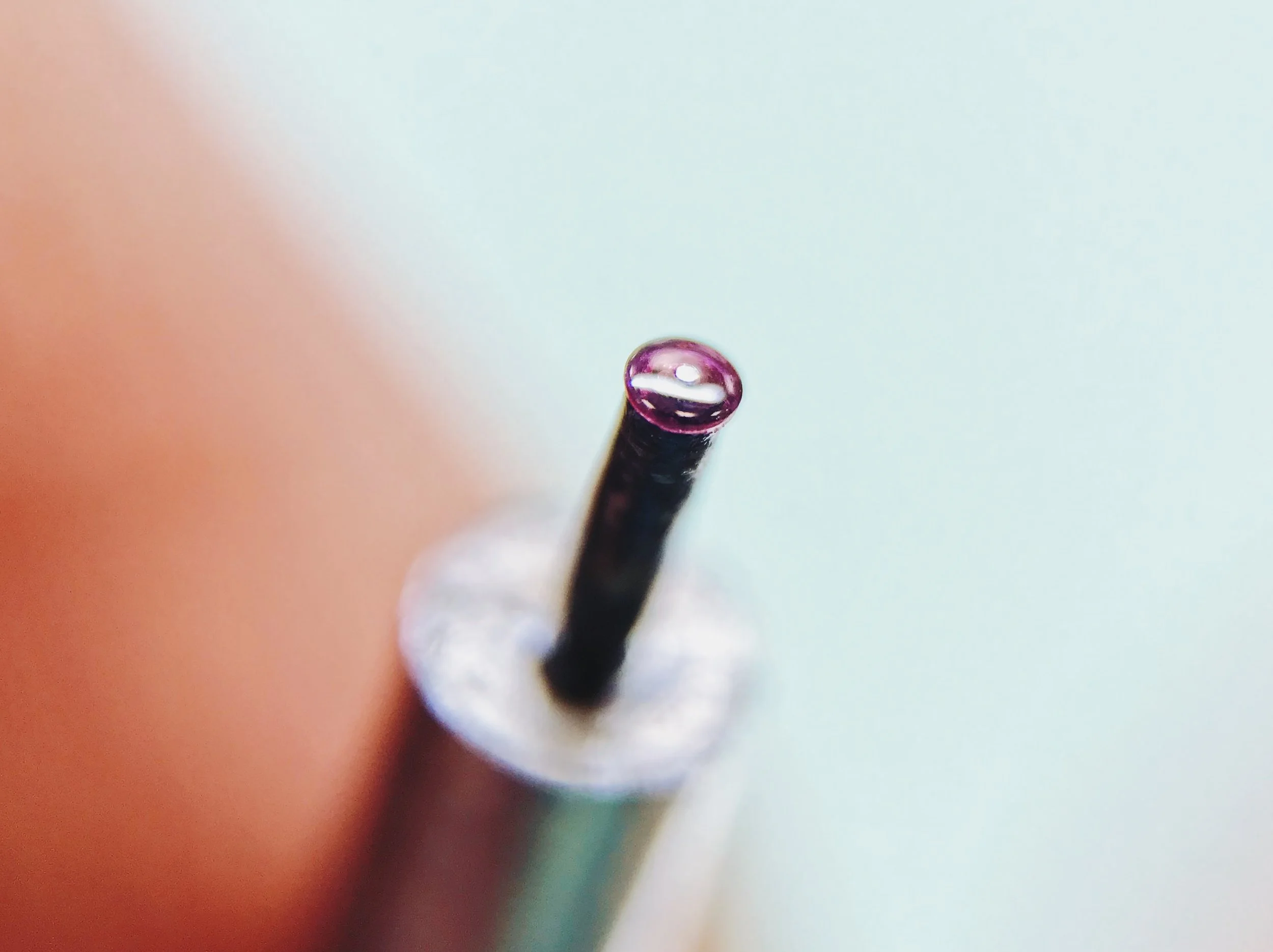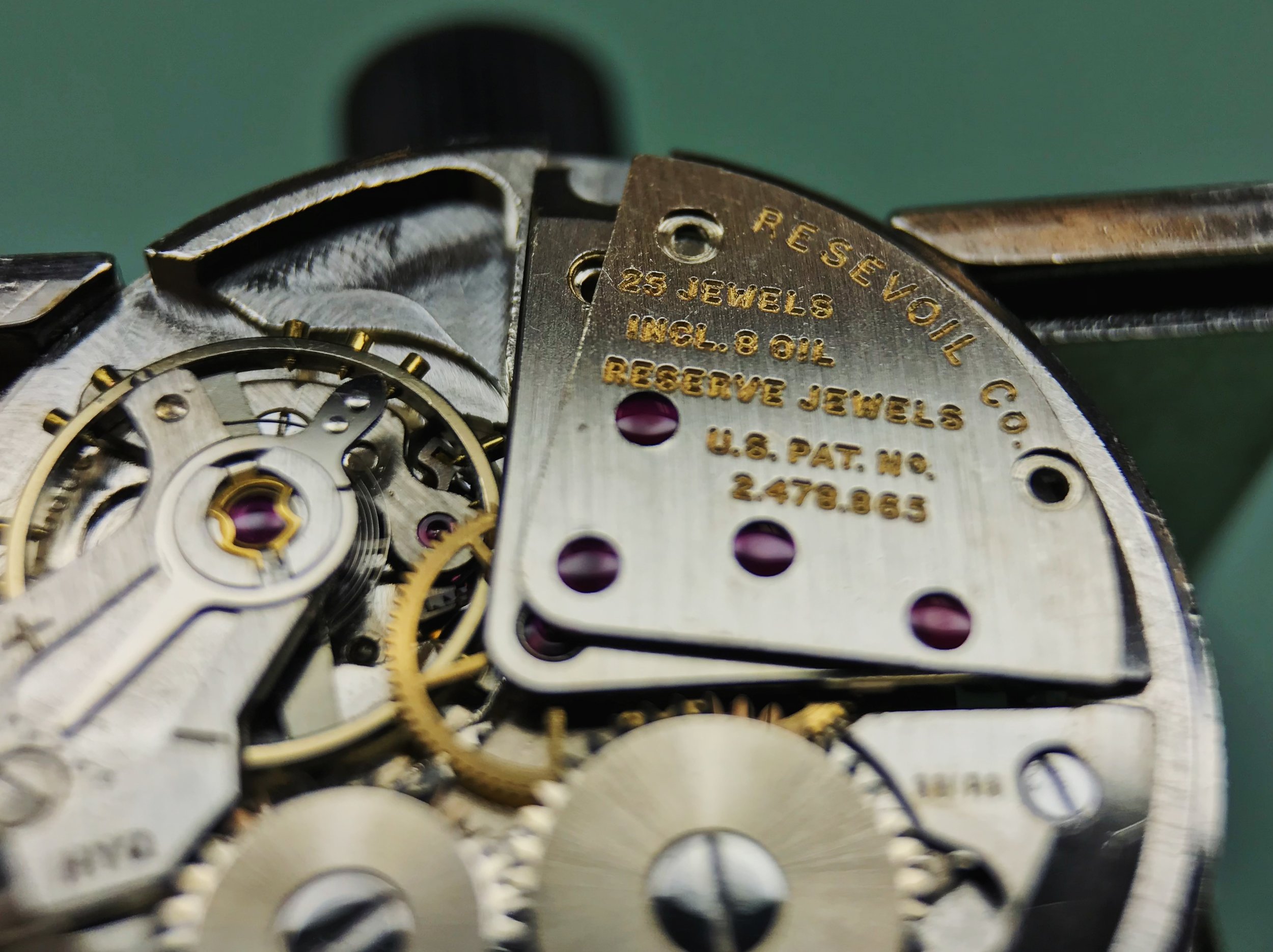Vintage Restoration: Jewel Wear

Watch pivots rotate in ruby jewels to reduce friction and to reduce wear. Ruby (or sapphire, they're the same mineral except for their color) is a 9 out of 10 on the Mohs hardness scale, and is extremely resistant to abrasion.
But even rubies are vulnerable to damage if you rub them for 100 years.
These are the balance jewels for the Elgin 345 that I'm restoring. The jewel on the right is the "hole jewel," and is designed to have a hole through the center. The jewel on the left is the "cap," and should be perfectly flat. Over many years, likely without adequate lubrication, the balance wheel pivots have drilled out a tiny divot into each cap (and deformed themselves quite badly in the process).
The math behind this damage is humbling. The balance oscillates 18,000 times per hour, or 432,000 times per day. That's 157,680,000 oscillations per year. Even if this watch only ran for a tenth of its life, those pivots have drilled into the cap jewels over a billion times.
Worn balance jewels can wreak havoc on a watch's rate and amplitude. Balance pivots are designed to only bear on the very tip, and the torque at that end of the geartrain is extremely low. Any extra friction—say, the worn tip of a pivot to its surrounding divot—can bring the movement to a stop.
Repairing this damage would be extremely time-comsuming (and possibly impossible), but luckily there is a shortcut. The divots aren't perfectly centered in the jewel, so just rotating them 180° in their settings will make the problem "disappear." The pivots also have to be reburnished to restore the tips, but that's a repair that I'll learn later.
Rotating the jewels isn't as easy as it would be in a modern watch. This watch isn't shock-protected, and the jewels are burnished into chatons and friction-fit into the plates and bridges. On a shock-protected watch, you simply have to remove the shock spring and the jewels will fall out. This watch requires the use of the jeweling tool to press the jewels in and out of their seats.
This presents much more of a problem during reassembly, since the jewels will be oiled and mustn't be misaligned. The solution here is to use an automatic oiler, or bleed the oil in through the already-assembled hole jewel and press it through to the cap with something very thin.
The "repair" is still a kludge until I can properly burnish the pivots, but that will happen down the line!
Watchmaking student at the Lititz Watch Technicum, formerly a radio and TV newswriter in Chicago.









